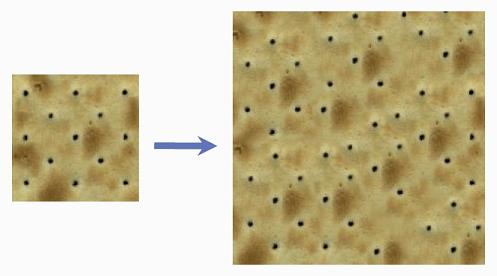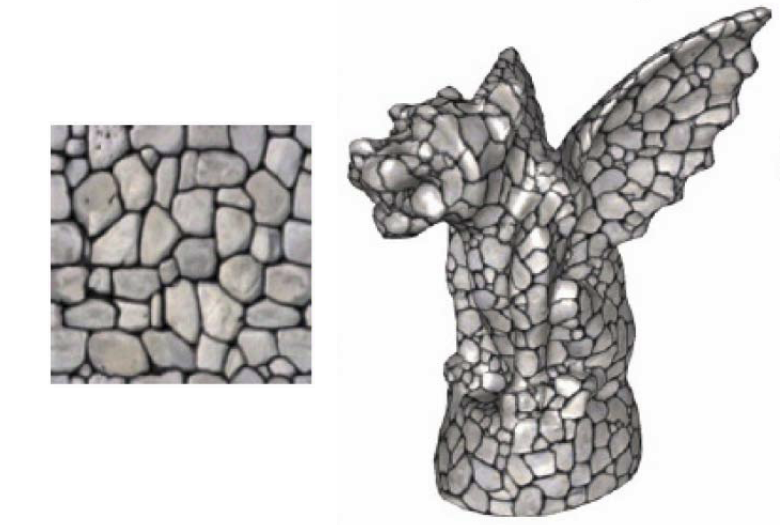Texture Synthesis
Texture synthesis is the problem of taking a small input texture and generating an arbitrarially large amount of texture using it as a model. Two examples of this are:


Texture Synthesis on Surfaces
You can also do texture synthesis on 3D surfaces, rather than just 2D images. In the example below, a stone texture was synthesized onto the gargoyle mesh:

An excellent approach to this problem is described in the Appearance-Space Texture Synthesis paper. My Design of Tangent Vector Fields paper uses this texture synthesis algorithm to visualize its vector fields; vector field design is an important prerequisite for texture synthesis on surfaces.
Links
Several good texture synthesis references are:
Texture Analysis and Synthesis - Covers a pixel based approach that underlies lots of modern approaches.
Parallel Controllable Texture Synthesis - A combination of a lot of good ideas in texture synthesis, with a focus on making it run very quickly.
SIGGRAPH 2007 Course Notes - By far the best overview of state-of-the-art texture synthesis approaches I've found.
CS148 Lecture Slides - These are my texture synthesis lecture slides for CS148, however they're mostly just a summary of the course notes.